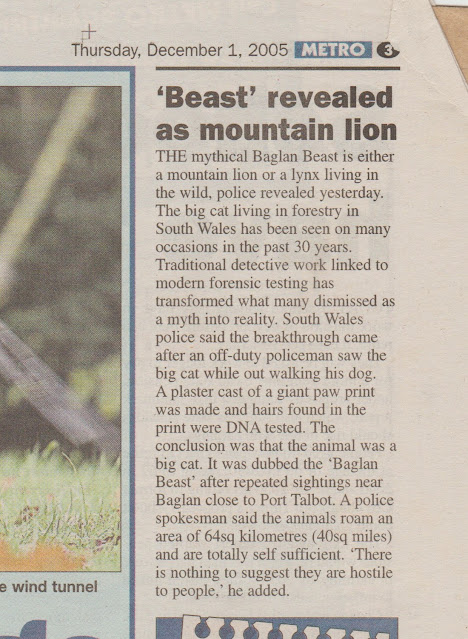Well, working with UK police forces we had all the puma and panthera DNA evidence we needed by the early 2000s so t6his is nothing new. What I can tell you is that I was actively speaking to witnesses who had very close observations of this type of cat in Cumbria back in the late 1990s and early 2000s.
All that has changed is that there are far more outlets ready to grab stories now and not for educational reasons either -wording and stories are always highlighting the sensationalist aspects. But, it is still interesting that almost two decades on people are catching up.
New DNA evidence confirms presence of big cat in British countrysideCould this be conclusive evidence that there are big cats roaming the British countryside?
An undisclosed Cumbrian hill farm is the location for the first ever positive identification of big cat DNA taken from a carcass.
In October last year, Cumbrian resident Sharon Larkin-Snowden came across the carcass and disturbed the animal that had been feeding on it.Larkin-Snowden told big cat expert Rick Minter’s Big Cat Conversations podcast that the carcass was clearly still fresh and that only some of the internal organs had been consumed.
“To my right, I saw something black running, and assumed it was a sheepdog,” she said. “Then I did a double take and realised it was a black cat. It ran towards a stone wall, stopped and then jumped the wall. It was big – the size of a German shepherd dog.”
Larkin-Snowden took swabs from the sheep’s nose and back and front legs, and they were sent to a laboratory at the University of Warwick which specialises in testing for big cat DNA run by Prof Robin Allaby.
Allaby told BBC Countryfile Magazine they were able to make a positive identification of DNA belonging to a cat from the Panthera genus. This includes five species – lion, leopard, tiger, jaguar and snow leopard, but only two – leopard and jaguar – that have melanistic (black) forms as seen by Larkin-Snowden.
The existence of non-native big cats such as leopards, but also others such as pumas, has long been held to be a reality by investigators such as Minter. He has received more than 1,000 eye witness accounts of big cat encounters and he says they come from all over the country.
Asked why hard evidence of their existence such as dead bodies or scats never come to light, Minter said they do – but that many people did not want to go public with them.
“Why would a private estate volunteer this information?” Minter said. “If you are gamekeeper and you get one in your rifle scope, why would you release that to anyone? They are concerned about the consequences of revealing their locality.”
Minter added that it was relatively unusual for non-native big cats to predate sheep. They were far more likely to take wild prey such as deer, but that in the uplands of Cumbria, there may not be sufficient deer and other wildlife for them to subsist on.
This news follows the 2022 discovery of strands of black animal hair on a barbwire fence in Gloucestershire apparently belonging to a big cat







